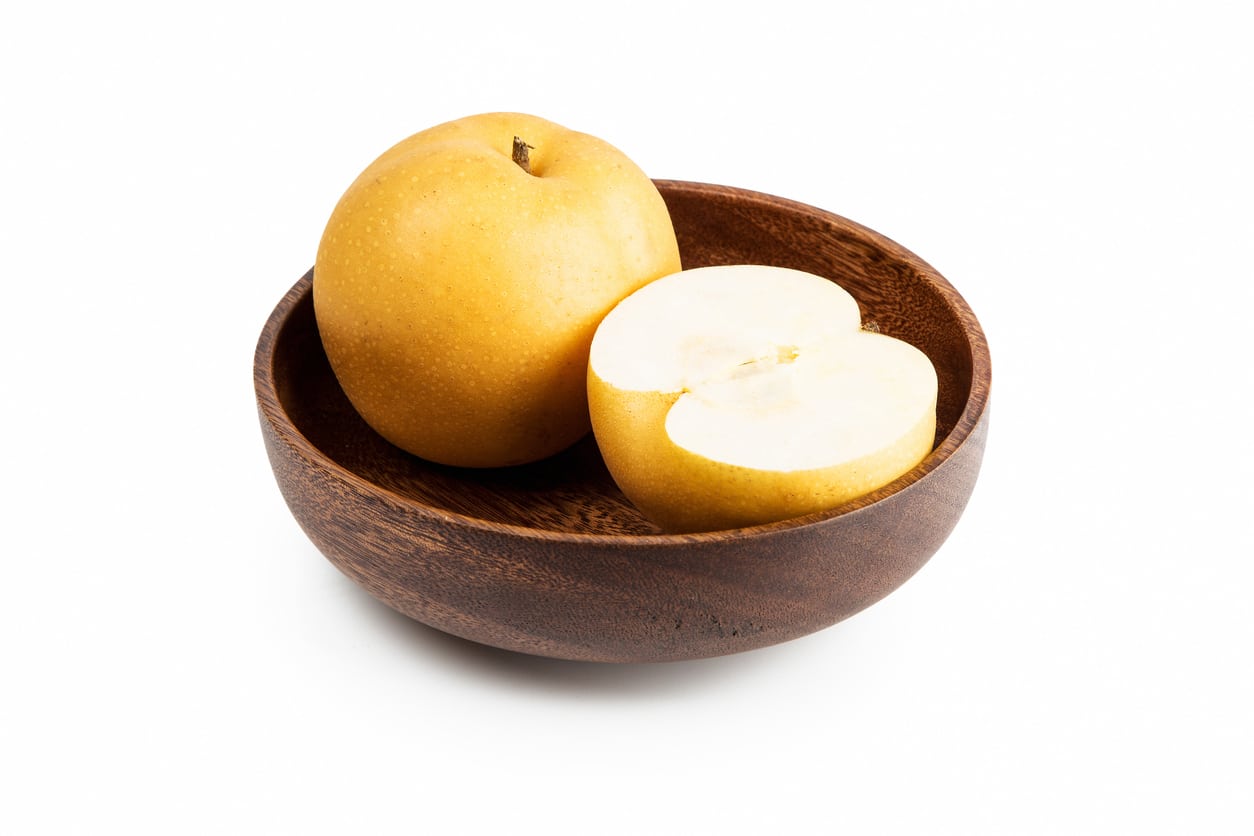Hosui Asian Pear Info – Caring For Hosui Asian Pears


Asian pears are one of life's sweet natural treats. They have the crunch of an apple combined with the sweet tang of a traditional pear. Hosui Asian pear trees are a heat tolerant variety. Keep reading for more Hosui Asian pear info. With some tips on how to grow Hosui, you'll soon be enjoying these lovely pears right from your own backyard.
Hosui Asian Pear Info
If you've ever had a Hosui pear, you won't forget the experience. This variety has a high acid content and is best eaten fresh but also makes unbeatable pies. The tree produces copious quantities of medium sized, golden skinned fruit. Hosui Asian pear trees grow 8 to 10 feet (2-3 m.) in height with a spread of 6 to 7 feet (2 m.). This tree is considered self-pollinating but even more of the delicious fruits are produced with a pollinating partner such as New Century. While the fruit is amazing, the tree is ornamental with three seasons of interest and color. In early spring, the plant has a massive flower show of dainty white blooms. Foliage is glossy green but changes to bronze in mid spring. The fruits arrive at the end of summer and are soon followed by another leaf change, bright red.
How to Grow Hosui Pears
Asian pears prefer cooler temperate regions, but this variety is heat tolerant. The Hosui is suited for USDA zones 4 to 10. Hosui trees need just 450 chilling hours to form fruit. Trees are drought tolerant once established but produce better when regularly irrigated. They prefer full sun and well-draining, loamy soil. Soak the roots of bare root trees for 24 hours in water prior to planting. Dig a hole twice as wide and deep as the spread of the roots and make a little pyramid of loosened soil at the bottom of the hole for the roots to spread over. Back fill and water in soil to remove air pockets. Hosui tree care after planting consists of regular watering and training of young plants.
Caring for Hosui Asian Pears
Young plants may need to be staked initially to promote the formation of a strong, vertical central leader. Use organic mulch around the root zone to conserve moisture and prevent competitive weeds. Asian pears don't need much pruning and naturally develop an open upright shape. Practice dormant pruning when the plant needs resizing or removal of water spouts and crossed branches. When fruit starts to form, thin to just one per spur. Hosui seems to have some resistance to fire blight, a common disease of pears. As with any tree, keep a close watch for pests and signs of disease and act immediately. Hosui tree care is quite effortless, and the pear trees will produce for years with very little interference on your part.
Sign up for the Gardening Know How newsletter today and receive a free copy of our e-book "How to Grow Delicious Tomatoes".

Bonnie Grant is a professional landscaper with a Certification in Urban Gardening. She has been gardening and writing for 15 years. A former professional chef, she has a passion for edible landscaping.